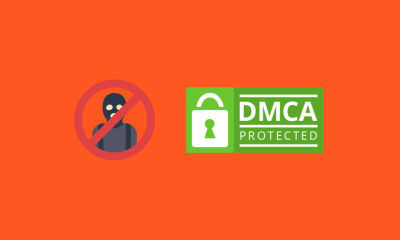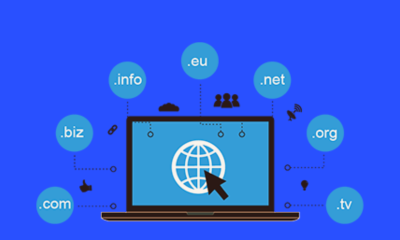In the vast landscape of the internet, domain extensions play a crucial role in shaping the online identity of a website. While the traditional .com, .net, and .org have been the go-to choices for many, a new wave of domain extensions has emerged, bringing with them a fresh and innovative appeal. Among these, one of the most notable success stories is the .io domain.
The Genesis of .io
The .io domain, originally assigned to the British Indian Ocean Territory, gained unexpected popularity in the tech community. Its association with “I/O,” which stands for Input/Output in the world of programming, struck a chord with developers and tech enthusiasts. This unique connection led to a surge in the adoption of .io domains for technology-related ventures.
Tech-savvy Appeal
The appeal of .io lies in its brevity and its association with technology and input/output operations. As startups and tech companies sought distinctive online identities, .io provided a modern and memorable alternative to the more traditional domain extensions. Its adoption quickly spread across the globe, turning .io into a symbol of innovation and cutting-edge technology.
SEO Benefits
Apart from its inherent tech appeal, .io also offers some SEO advantages. Search engines like Google consider the relevance of a domain extension to the content of the website. For technology-focused websites, having a .io extension can be seen as a positive signal, potentially boosting search engine rankings.
The Ripple Effect
The success of .io has inspired other country-code top-level domains (ccTLDs) to explore new opportunities. Some ccTLDs, like .ai (Anguilla), .ly (Libya), and .co (Colombia), have also gained popularity for their unique associations and user-friendly extensions.
- .ai – Artificial Intelligence: The .ai domain gained traction due to its association with “artificial intelligence.” As the AI industry expanded, businesses and startups embraced .ai for their digital presence, creating a niche identity.
- .ly – Short and Sweet: Libya’s .ly extension found favor in the world of link-shortening services, where brevity is key. Platforms like Bit.ly contributed to the widespread use of .ly, turning it into a recognizable and trendy extension.
- .co – A Global Business Hub: Originally the country code for Colombia, .co quickly transcended its geographical boundaries. Many businesses, especially startups, were drawn to its universal appeal, interpreting it as “company” or “commerce.”
Other Popular Country Code Top-Level Domains (ccTLDs)
- .ai (Anguilla):
- Common Use: Associated with “artificial intelligence.”
- Example: Many AI-focused startups and companies use .ai for their websites.
- .ly (Libya):
- Common Use: Often associated with creativity and used in link shortening services.
- Example: Bit.ly is a well-known URL shortening service using the .ly extension.
- .co (Colombia):
- Common Use: Widely adopted as a global alternative to .com, often interpreted as “company” or “commerce.”
- Example: Tech companies, startups, and businesses worldwide use .co for their online presence.
- .me (Montenegro):
- Common Use: Used for personal websites, blogs, and online portfolios.
- Example: About.me is a platform for personal profile pages using the .me extension.
- .io (British Indian Ocean Territory):
- Common Use: Associated with technology and input/output operations.
- Example: Numerous tech startups and developers use .io for their websites.
- .gg (Guernsey):
- Common Use: Popular in the gaming community.
- Example: Gaming websites, streams, and forums often use .gg for its association with “good game.”
- .tv (Tuvalu):
- Common Use: Frequently used for video content and streaming services.
- Example: Many video-related platforms and websites use .tv for its connection to “television.”
- .fm (Federated States of Micronesia):
- Common Use: Associated with radio and music-related content.
- Example: Podcasts, radio stations, and music services may opt for .fm for its connection to “frequency modulation.”
- .it (Italy):
- Common Use: Represents Italy, but it’s versatile and widely used.
- Example: Many Italian businesses use .it for their websites, and it’s also popular for creative and tech-related projects.
- .cc (Cocos Islands):
- Common Use: Originally intended for Cocos Islands but adopted as an alternative to “.com.”
- Example: Websites looking for a short and memorable domain often use .cc, providing a global appeal.
- .ma (Morocco):
- Common Use: Represents Morocco, often used by businesses in the country, it is also used to represent “Master of Arts” (MA), making it suitable for websites related to the arts.
- Example: Moroccan companies and organizations use .ma to establish their online presence.
These ccTLDs have found popularity beyond their original geographic designations, and their unique associations make them stand out for specific industries or types of content.
The Future of ccTLDs
As the internet continues to evolve, the importance of domain extensions will likely grow. Country code top-level domains, once limited to specific geographic regions, are now becoming global symbols with unique associations. The success of extensions like .io demonstrates the dynamic nature of the online world, where innovation and creativity can turn a seemingly ordinary ccTLD into a digital sensation.
In conclusion, the journey of .io and other trendy ccTLDs showcases the influence of culture, technology, and creativity in shaping the online landscape. As businesses and individuals seek distinctive digital identities, the realm of domain extensions offers a canvas for expression, with each extension telling a unique story. The future holds exciting possibilities as more ccTLDs explore new narratives, contributing to the rich tapestry of the internet.













